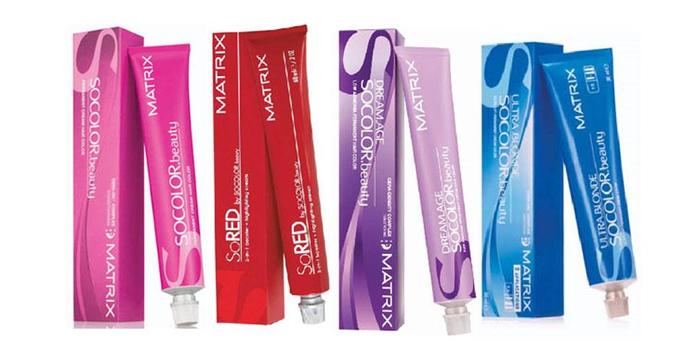The structure of the hair is designed in such a way that color correction is needed when dyeing it. It is performed using the rules of color - the science of the structure and properties of color. The Oswald Circle contains the basic shades from which the composition is prepared to obtain the desired hair tone.
Basic concepts of color
Coloristics studies the perception of color by sight. This science includes sections:
- formation and structure of color;
- rules for mixing shades;
- the effect of colors on the psyche;
- physical properties of the spectrum.
All shades contain the color wheel RYB and KZhS. Oswald's star is composed of primary, secondary, tertiary and achromatic tones, represented schematically using a geometric body. If you divide the circle of QLM horizontally, then the upper part will contain warm shades, and the lower one - cold shades.
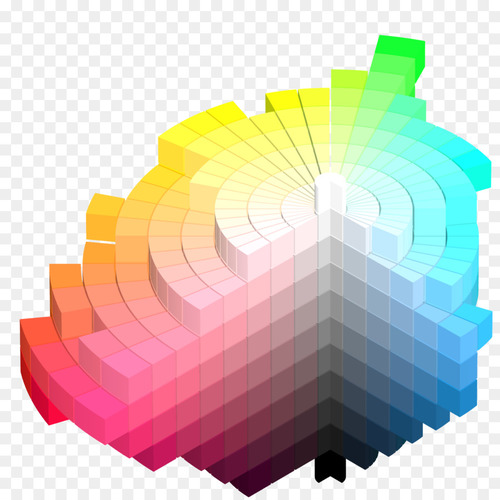
The Munsell system describes color in terms of two characteristics: lightness and saturation. It is represented as a vertical axis with a range of shades from white to black (achromatic scale), which is horizontally crossed by the color wheel. By dropping it lower in a straight line, you can get a shade darker. If you take a point closer to the edge of the color wheel, the tone will be brighter.
Features of the choice of colors by color types of appearance
Oswald's circle for hair color makes it easy to calculate when mixing dye shades. And Itten's theory of color separation is needed by stylists to choose an individual palette of shades for any type of appearance. The artist singled out the groups, which he called the winter, spring, summer and autumn seasons. Each of them had its own palette of tones.
The original shade table contains 200 color types, but a simpler separation scheme for seasons is applied. It is enough to single out the signs characteristic of the types of appearance. Based on the natural shade, you can change the hair color within the shades of your "season".
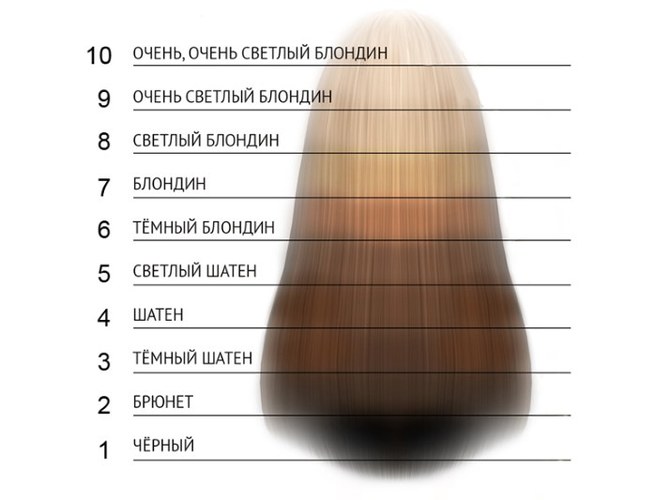
Color types have three parameters:
- tone depth indicator from 1 to 12 lightness level;
- saturation of the hue;
- warm or cold tones.
Almost the same parameters have color types light summer and autumn, contrasting winter and summer. Changing hair color, you can move on to these seasons. However, you should confine yourself to a slight change in saturation and hue depth.
3 primary colors in colouristic and their combination
The Oswald Hair Coloring Circle contains colors that produce different tones when mixed. These are the primary shades and they correct unwanted tones when added to colorants.
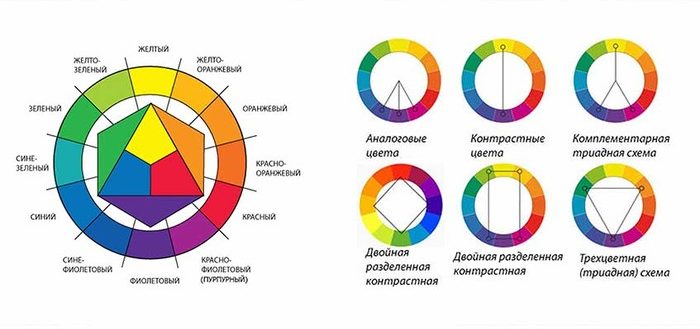
In addition, the natural shade of the hair depends on their combination:
- blue pigment is the main one in dark hair;
- red in equal proportions with blue creates medium hair tones;
- yellow with a small amount of red are the basis of the blond;
Blue is the coldest and most intense color in the range. In the dye, it adds depth and darkens the original shade.
Red is less powerful in terms of influence. If you add it to paints based on blue pigment, then the color result will be lighter. Mixing red and yellow shades changes the properties of the composition towards darkening. Yellow in all colors increases the lightness of the tone and makes it brighter.
Rules for mixing paints of different shades
Experienced colorists mix different dyes to achieve unique shades.
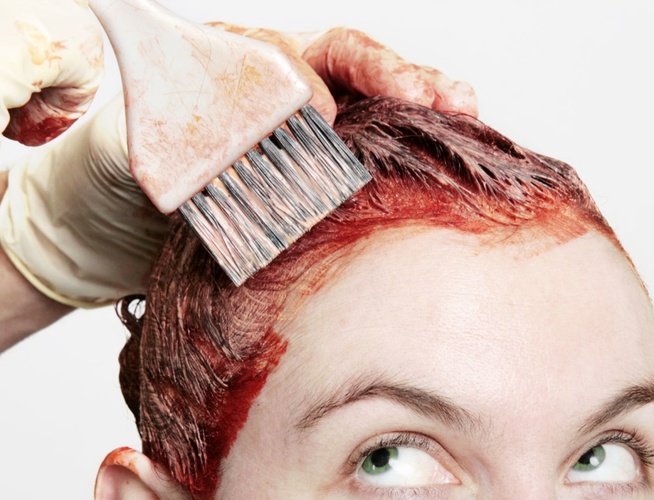
This procedure requires compliance with several rules:
- you can mix pigments with similar shades;
- you cannot combine paints from different manufacturers, since everyone has different palettes;
- you need to consider the degree of exposure for different types of hair.
When staining with combinations of shades, proportions must be strictly observed and scales must be used.
Pigments are mixed according to the following rules:
- The amount of dye for shoulder-length hair is 60 ml (1 tube). The required amount of cosmetics is calculated from this length.
- Only professionals can combine more than three colors in one palette.
- Undertones such as green and red, purple and yellow, blue and orange do not mix with each other.
To correctly combine shades with each other, you need to be able to interpret the numerical designations of shades. The first number on the box indicates the lightness level. To understand what color will turn out, you need to divide the sum of the first numbers on the used tubes and divide by their number. For example, if you mix 2 - brunette and 8 - medium blonde, the output will be 5 - light brown-haired.
In what proportions to mix paints
To understand how the ratio of colors is calculated to obtain the desired shade, you need to know about concepts such as tone level, lightening base and percentage of oxidizer. The tone level ranges from 1 to 10, in some paints there are 11 and 12 shades (superblond).
Important! Shades in terms of depth of tone should be selected, focusing on the second number after the dot in the paint. It must be indicated by zero. These paints do not contain any additional pigment, which can undesirably appear as a darkening of the color.
Hair color depends on the ratio of blue, red and yellow. When the natural pigment is removed from the hair with hydrogen peroxide, the base of the lightening appears. For example, when moving from bluish-black to brown-haired, red pigment appears, which is masked by color correction.
Knowing your level of depth of tone, you can understand what percentage of the oxidizer you need to take. There are 1-12% activators on the market. This indicator reflects the amount of hydrogen peroxide in the composition. Accordingly, the higher it is, the more intense the clarification reaction.
Each type of activator is used for different types of coloring:
- 1.2–1.5% - used for toning for slight color changes;
- 3% - hair is dyed tone-on-tone, at a depth of 3.0–6.0 it darkens by 1–2 tones, at 7.0–10.0 it lightens by 1 level;
- 6% - lightens by 1 shade, used for color dyeing and gray hair;
- 9% - lightens by 2-3 tones, used on dark hair for color dyeing and various coloring techniques;
- 12% (40 vol) - used for persistent coloring with lightening on hair below the 4th level of tone depth. Radically affects hair, does not cover with foil.
Important! High percentages of the activator are not used for clarification with powder. Such oxidants are used to work with a line of superblond natural hair.
The proportion of coloring agents is determined individually. The structure of the hair, the number of dyes, the dyes used, the lightening background and the level of tone depth are taken into account. Without taking these parameters into account, you can use the standard table.
| Dyeing type | Color ratio |
| Persistent staining | 60 ml paint + 60 ml oxidizer |
| Intense toning | 1: 2 with 1.5-1.8% oxide |
| Pastel shades | 1: 2 with 1.2% activator for pastel shades |
| Removing gray hair | 60 ml paint + 60 ml oxidizer |
| Lightening | 1:2 |
| Copper coloring | 1:1 |
| Color highlighting | 1:1 |
| Create unique tones | 1:1 |
| Coloring | 1:5 |
To calculate the optimal holding time for staining, you need to add 15 minutes to the volume of the oxidizing agent. For example, using an activator 20 vol implies 20 + 15 = 35 minutes.
Color theory by W. Oswald.
Oswald's star is represented as an achromatic axis crossed by the color wheel. For hair coloring, this figure is presented in a simplified form.
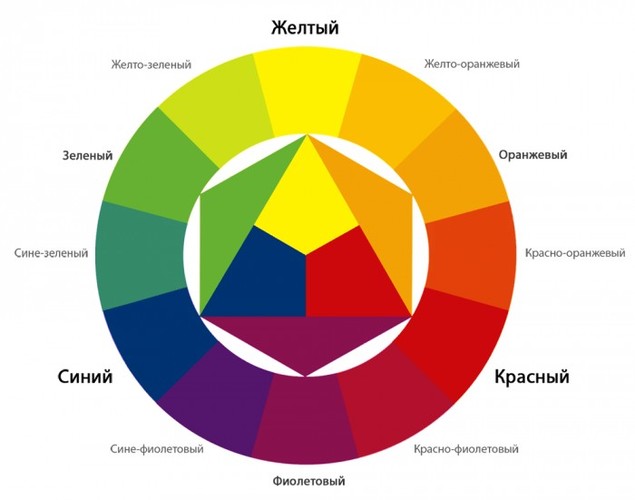
The circle is divided into 4 sections:
- red turns into yellow - I section;
- red is replaced by blue - section II;
- blue turns into green - section III;
- green is replaced by yellow - IV section.
Related colors are in one section, and related-contrasting colors are in the left or right half of the circle.
The transitions between the sections form shades. There are secondary shades, formed by mixing base colors, and tertiary ones, obtained by a combination of base and complementary shades. If you draw a diagonal from one shade to another, you can get opposite colors. As a result of their mixing, gray tones are formed.
How to work with Oswald's circle
When working with an Oswald circle, a number of rules apply for color grading.
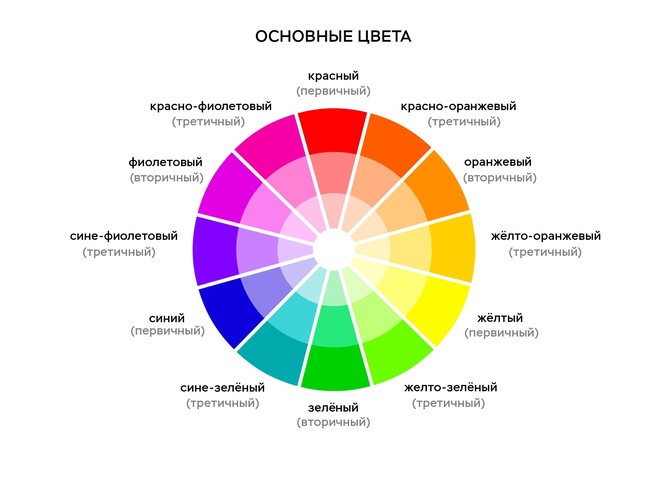
The circle, divided into 3 base colors and 3 secondary colors, is used in calculations to enhance and neutralize shades:
- to enhance the color on the circle, take shades from the segment where it is located;
- to neutralize the tone, a diagonal is drawn towards the opposite segment;
- to change the shade towards the desired one, the colors from two adjacent segments are combined.
For example, the yellow background of the clarification is neutralized by the counter-color, standing on the diagonal - purple.
The red tint is removed by adding green pigment to the dye. If pastel toning is performed, then the tone is lightened to 9-10 levels, and then tinted with a small amount of red. It is worth remembering that mixing the three base colors in equal proportions creates a gray-brown tint and makes the hair darker.
Primary colors
Blue, yellow and red cannot be obtained by mixing other shades. All shades on the palette are obtained from the primary colors. And their combination in equal proportions forms an achromatic series. The use of pure colors without impurities suits contrasting types of appearance.
Application to bleached hair of red, yellow, blue forms transitional tones: pink, light yellow, blue.
Secondary colors
When mixing primary colors, secondary colors are formed, which are called shades. Mixing yellow and red produces orange, blue and yellow - green, red and blue - purple. Mixing these shades also forms an achromatic series, the tone level of which depends on the saturation of the tones.
Tertiary colors
By combining primary and secondary colors, a wide range of tertiary shades are obtained.
Such tones can also be obtained by mixing the achromatic series with colors, varying the level of their saturation. Paints from different manufacturers contain inflorescences from base colors, with secondary ones and form the same tertiary colors, so the dyeing process can give completely unpredictable results and requires color skills.
Harmonious colors
You can calculate which shades are combined with each other by building shapes on the color wheel.
There are 6 methods for determining harmony:
- triad. An equilateral triangle is taken in the center;
- complementary combination. Points are taken from opposite parts of the circle;
- a similar combination. 4 shades of the same contrast are extracted from one or related segments;
- separate-complementary combination. A scheme similar to the analogous one is used, only instead of the opposite color, the adjacent shades are taken;
- tetrad. A rectangle is selected in the center of the circle;
- square.A square of any size is built in the center of the circle and shades are selected from it.
The rules for constructing harmonious combinations are used when choosing shades of staining for various color types.
Monochrome colors
The combination of shades close to each other forms a monochrome row. They can be similar in terms of the following criteria:
- one level of tone depth, but different saturation;
- different tone levels, but the same saturation;
- one hue, but different levels of depth and saturation.
In a monochrome series, you can play by changing one criterion with varying degrees of intensity.
Achromatic colors
The achromatic range includes all shades from white to black. In fact, white does not contain a single shade, while black combines all tones. The contrast between tones in this color scale is achieved only by the difference between the lightness levels of the tones.
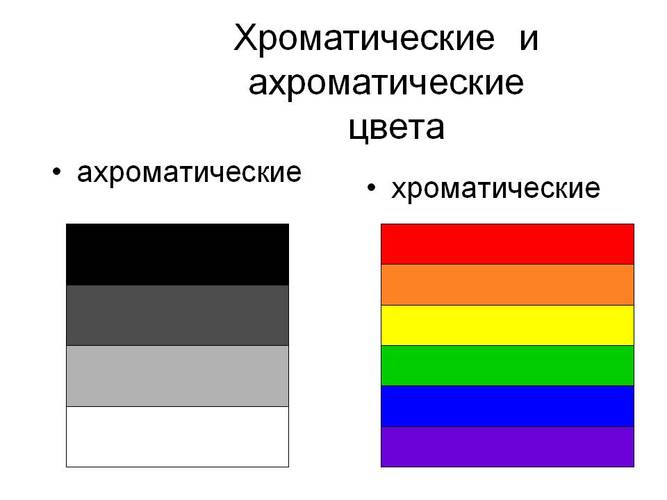
It is impossible to obtain an achromatic scale on hair without color correction. It is created using a competent combination of counter-flowers (opposite shades in the color wheel).
Ash shades
Oswald's circle for hair coloration contains a range of gray and taupe shades. Such colors are quite difficult to obtain, since most girls have a high content of red pigment in their hair. Ash undertones are formed by neutralizing yellow and red hues.
Gray-brown tones are suitable exclusively for girls with a cold skin tone. Brown eyes and dark skin make a warm appearance painful with ashy shades.
Selection of shades in the Oswald circle for dyeing hair with dyes from different manufacturers
The use of the Oswald circle when dyeing is closely related not only to the original state of the hair, but to the color nuances that dyes from different manufacturers carry. Each paint has both a level of depth of tone and additional admixtures of pigments that adjust the level of red, gold, purple shades.
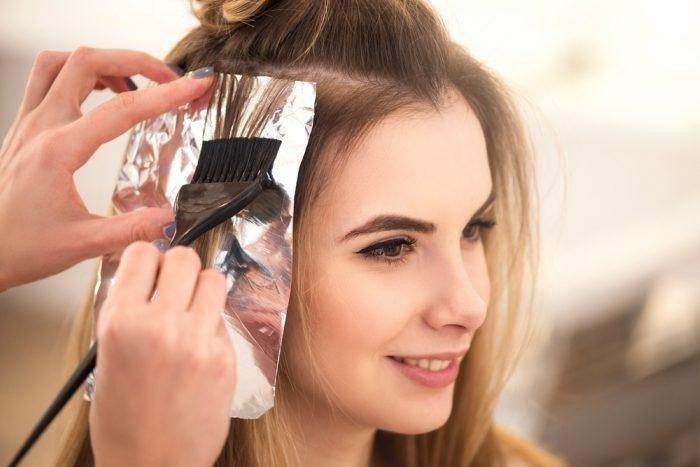
Professional paints differ from household paints not only in price. Their composition is complemented by higher quality reaction stabilizers, and the pigment molecules are smaller. These factors affect the condition of the hair when dyed, the color retention and how it is expected.
Estelle
Estel color palette includes shades from 1-10 tone levels. Natural shades without additional color impurities are presented in shades 1.0–10.0. Color nuances are indicated by a number after a point from 1 to 7. Each value means the color of an additional color, which is placed in the dye.
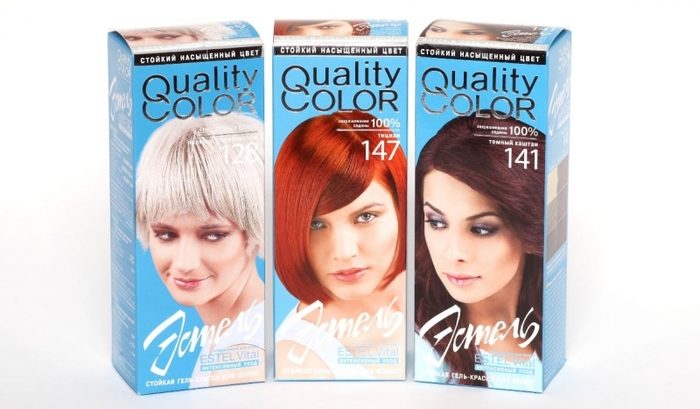
For Estel:
- 1 - ash;
- 3 - gold;
- 4 - copper;
- 5 - red;
- 6 — violet;
- 7 - brown.
In a series of products, there are many lines for different colors. To create bright red tones, there are Extra Red paints from the De Luxe series. It is possible to paint over gray hair with Estel Du Luxe Silver. To obtain an individual tone, it is better to mix related tones from the same series. Color correction can be done using pure pigments and toning masks that the manufacturer produces.
Kapus
Kapous produces three series Professional, Nonammonia, Studio. The palettes contain 106 shades and 6 color enhancers.
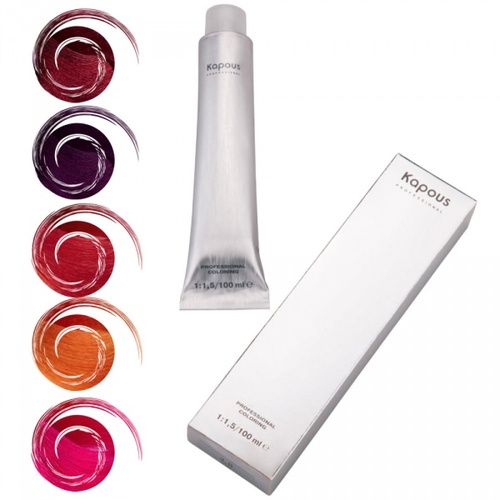
Farb-card contains 8 additional color nuances in paints:
- 1 - ashy;
- 2 - mother of pearl;
- 3 - gold;
- 4 - copper;
- 5 - mahogany;
- 6 - red;
- 8 - chocolate.
In addition, Kapous has its own line of superbloons. The technology for dyeing and mixing shades is identical with other brands. Kapous paints cannot be applied neat or combined with other brands of oxidizing agents.
Londa
Londa produces color palettes that contain special blends and pigments to enhance the color. There are 7 additional color nuances, and they are identical to the color numbering from Estel, but there is a pearl pigment at the eighth number.
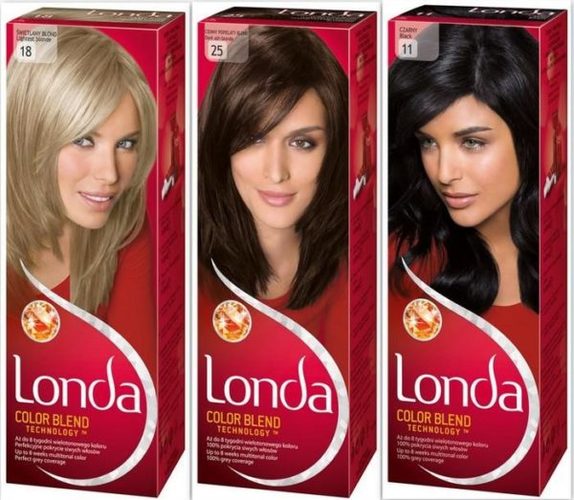
It is worth remembering that Londa is a long-lasting dye that perfectly covers gray hair. But the specificity of its action lies in some pigments that are difficult to remove from hair after dyeing. Dark shades can be washed out in pink and peach tones.
Igora
Igora has several shade palettes to give specific effects to hair. The farb card contains unusual noble shades.
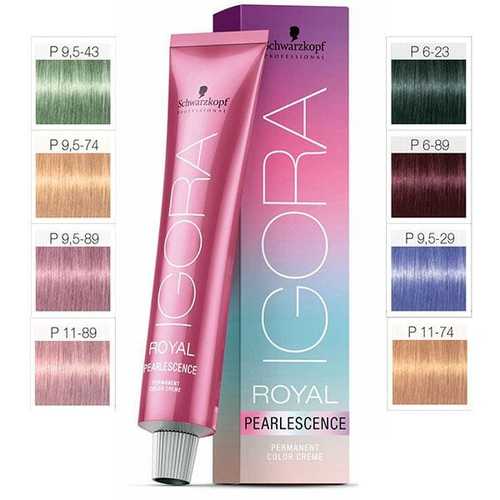
Additional colors are divided into the following groups:
- 1 - ashy;
- 2 - brown;
- 3 - matte;
- 4 - beige;
- 5 - gold;
- 6 - chocolate;
- 7 - copper;
- 8 - red;
- 9 - purple.
The series includes 3 mixtons and 3 amplifiers, color thinners.
Indola
The assortment of paints includes 100 different shades. Additional colors include:
- 1 - ashy;
- 2 - pearl;
- 3 - golden;
- 4 - copper;
- 5 - red;
- 6 - mahogany;
- 7 — violet;
- 8 — chocolate;
- 9 - green.
Indola
The paints can be used for painting baths. Cold shades are mixed with paints without additional color scheme, warm ones - with .03 color scheme.
Pallet
Palette - a series of products for home coloring. It presents a standard oxidizer and paint, which ranges from 1-10 shade levels and is not classified by color content. The series of products are divided into 3 types according to the color fastness. This ink is not suitable for professional color grading.
Garnier
The Garnier range contains the Oleo Intense and Color Naturals line. They are intended for home use and consist of paint and a standard oxidizing agent. Some products may contain 3 different complementary colors. There is a super lightening series. The media are not suitable for color grading.
Matrix
The Matrix professional color palette contains the Matrix Color Sync and Extra, SOCOLOR Beauty and Ultra Blonde series. The paints contain high-quality raw materials, which gives the pigments evenly and gives the desired shade. A series of non-lightening paints can raise the tone by no more than 2 levels.
Packages are numbered in letters. The dye is characterized by high resistance and long-term wear.
Oswald's circle is a basic color component that you need to be able to use in order to get the desired shade of hair. The number of nuances that appear during staining can lead to unexpected results. Therefore, it is worth finally trusting the cardinal changes in appearance to professional colorists.
Hair Color Mixing Video
Color palette video:

